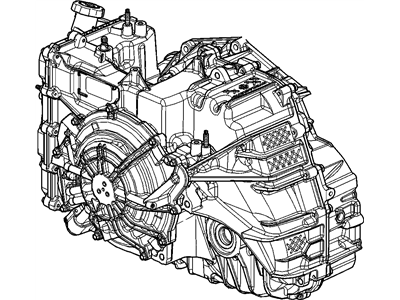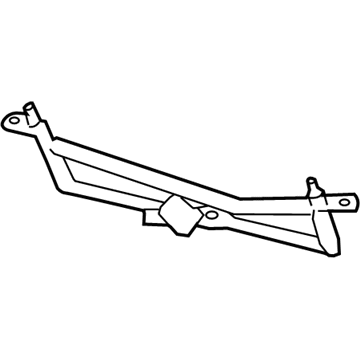My Garage
My Account
Cart
Genuine Buick Enclave Transmission Assembly
Trans Assembly- Select Vehicle by Model
- Select Vehicle by VIN
Select Vehicle by Model
orMake
Model
Year
Select Vehicle by VIN
For the most accurate results, select vehicle by your VIN (Vehicle Identification Number).
19 Transmission Assemblies found
Buick Enclave Transaxle Asm,Auto (4Xrk 3.16 Awd Generator Ii)
Part Number: 19354268$3911.03 MSRP: $4388.61You Save: $477.58 (11%)Buick Enclave Transaxle Asm,Auto (4Vrk 3.16 Fwd Generator Ii)
Part Number: 19354267$3911.03 MSRP: $4388.61You Save: $477.58 (11%)Ships in 1-3 Business DaysBuick Enclave Transaxle Asm,Auto (Service Remanufacture) *Programming
Part Number: 19332876$4074.88 MSRP: $4573.97You Save: $499.09 (11%)Buick Enclave Transaxle Asm,Auto (Service Remanufacture)
Part Number: 19332862$4130.90 MSRP: $4637.33You Save: $506.43 (11%)Ships in 1-3 Business DaysBuick Enclave Transaxle Asm,Auto (Service Remanufacture) *Programming
Part Number: 19332852$3924.29 MSRP: $4403.61You Save: $479.32 (11%)Ships in 1-3 Business DaysBuick Enclave TRANSAXLE ASM,AUTO (SERV REMAN) 9FKB
Part Number: 19419490$4854.00 MSRP: $5443.44You Save: $589.44 (11%)Ships in 1-3 Business DaysBuick Enclave TRANSAXLE,AUTO
Part Number: 19416756$4787.43 MSRP: $5380.01You Save: $592.58 (12%)Ships in 1-3 Business DaysBuick Enclave Transaxle Asm,Auto (Service Remanufacture) *Programming
Part Number: 19332854$4036.08 MSRP: $4530.06You Save: $493.98 (11%)Ships in 1-3 Business DaysBuick Enclave Transaxle Asm,Auto (Service Remanufacture) *Programming
Part Number: 19332855$3962.33 MSRP: $4446.64You Save: $484.31 (11%)Ships in 1-3 Business DaysBuick Enclave Transaxle Asm,Auto (Service Remanufacture)
Part Number: 19332869$4077.09 MSRP: $4576.47You Save: $499.38 (11%)Ships in 1-3 Business DaysBuick Enclave TRANSAXLE ASM,AUTO (SERV REMAN) 8KLB (3.49 RATIO) FWD
Part Number: 19416757$4794.58 MSRP: $5388.10You Save: $593.52 (12%)Ships in 1-3 Business DaysBuick Enclave Transaxle Asm,Auto (Service Remanufacture) *Programming
Part Number: 19332873$4311.09 MSRP: $4841.16You Save: $530.07 (11%)Ships in 1-3 Business DaysBuick Enclave TRANSAXLE ASM-AUTO 1QKB (3:49 RATIO) FWD
Part Number: 24299781$2682.31 MSRP: $2939.27You Save: $256.96 (9%)Ships in 1-3 Business DaysBuick Enclave TRANSAXLE ASM,AUTO (SERV REMAN) 9EKB
Part Number: 19419489$4162.94 MSRP: $4661.70You Save: $498.76 (11%)Ships in 1-3 Business DaysBuick Enclave TRANSAXLE ASM-AUTO 1PKB (3:49 RATIO) AWD
Part Number: 24299782$2688.39 MSRP: $2946.14You Save: $257.75 (9%)Ships in 1-3 Business DaysBuick Enclave Transaxle Asm,Auto (Original Equipment Seed)
Part Number: 19331485$3089.97 MSRP: $3459.81You Save: $369.84 (11%)Ships in 1-3 Business DaysBuick Enclave TRANSAXLE ASM-AUTO
Part Number: 24047457$1812.21 MSRP: $1954.99You Save: $142.78 (8%)Ships in 1-2 Business DaysBuick Enclave TRANSAXLE ASM-AUTO
Part Number: 24047458$1816.03 MSRP: $1959.31You Save: $143.28 (8%)Ships in 1-2 Business Days
Buick Enclave Transmission Assembly
Each OEM Buick Enclave Transmission Assembly we offer is competitively priced and comes with the assurance of the manufacturer's warranty for the part. Furthermore, we guarantee the speedy delivery of your orders right to your doorstep. Our hassle-free return policy is also in place for your peace of mind.
Buick Enclave Transmission Assembly Parts Questions & Experts Answers
- Q: What is the importance of referring automatic transaxle problems to a dealer service department or qualified repair facility on Buick Enclave?A: In the event of a problem occurring, it will be necessary to establish whether the fault is electrical, mechanical, or hydraulic in nature before repair work can be contemplated. Diagnosis requires detailed knowledge of the transmission assembly's operation and construction, as well as access to specialized test equipment, and so is deemed to be beyond the scope. It is therefore essential that problems with the transmission assembly are sent to a dealer service department or other qualified repair facility for assessment.
- Q: How do I disconnect wiring from the transaxle and transfer case, and perform other steps for transaxle removal on Buick Enclave?A: To remove the air filter duct and filter housing, disconnect all wiring from the transmission assembly and transfer case, including ground wires, transmission range switch, transmission speed sensors, and transmission control module. Disconnect the Shift Cable from the shift lever on the transmission assembly and remove the cable from the bracket. Disconnect the transmission cooler lines and plug and cap the lines and openings. Disconnect any transmission or transfer case vent tubes. Install an engine support fixture and connect the chains to the lifting brackets on top of the engine. Remove the uppermost transmission-to-engine mounting bolts. Loosen the front wheel lug nuts and raise the front of the vehicle. Drain the transmission fluid and remove the front wheels and inner fender splash shields. Remove the frame brace, disconnect the oxygen sensors, and remove the flexible exhaust pipe. On AWD models, remove the driveshaft. Remove the subframe and driveaxles. On FWD models, remove the intermediate shaft and transmission-to-engine brace. On AWD models, remove the transfer case. Remove the transmission mount and bracket, and the starter. Remove the torque converter bolts through the starter opening. Support the transmission with a jack and remove the driveplate inspection cover on FWD models. Remove the lowermost transmission-to-engine bolts and lower the transmission until it can be safely set on the ground. For installation, ensure the torque converter is properly engaged with the transmission, align match marks on the driveplate and torque converter, replace the steering shaft pinch bolt, install all drive plate-to-torque converter nuts before tightening, tighten all bolts to the specified torque, replace O-rings, tighten subframe bolts and wheel lug nuts, fill the transmission with the correct fluid, and adjust the shift cable.
Related Buick Enclave Parts
Browse by Year
2024 Transmission Assembly 2023 Transmission Assembly 2022 Transmission Assembly 2021 Transmission Assembly 2020 Transmission Assembly 2019 Transmission Assembly 2018 Transmission Assembly 2017 Transmission Assembly 2016 Transmission Assembly 2015 Transmission Assembly 2014 Transmission Assembly 2013 Transmission Assembly 2012 Transmission Assembly 2011 Transmission Assembly 2010 Transmission Assembly 2009 Transmission Assembly 2008 Transmission Assembly








